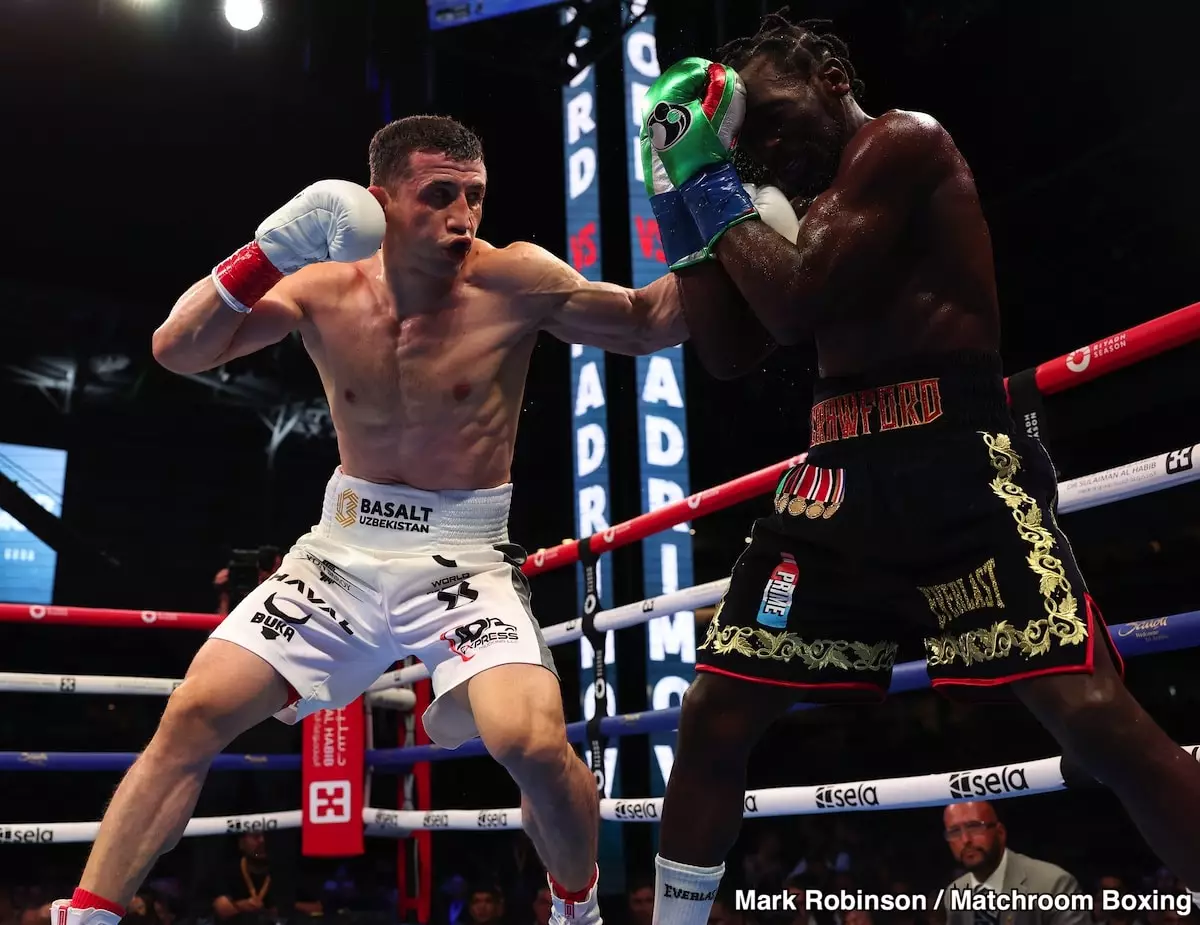Boxing is often characterized by intense competition and high stakes, where the marginal differences between victory and defeat can pivot on the fighter’s mental acuity and motivation. Recently, veteran champion Roy Jones Jr. analyzed Terence Crawford’s underwhelming performance against Israil Madrimov, raising intriguing points about what truly affects a boxer’s display in the ring.
In August, Crawford faced Madrimov in what many expected to be a straightforward bout, given Madrimov’s relatively sparse professional record of ten fights. Despite this, Crawford found himself pushed to the limits, narrowly escaping with a 12-round unanimous decision victory. Jones asserts that the lack of an intimidating opponent may have played a significant role in Crawford’s lackluster performance. When battling an opponent deemed to be inferior, the mental excitement or urgency to perform at peak levels may diminish, potentially leading to a subpar performance.
Moreover, the nuances of motivation take center stage in Jones’ analysis. He points to Crawford’s age — 37 at the time and facing the burden of infrequent fights — suggesting that the underlying issues may stem from a lack of motivation sparked by the perceived ease of the matchup. Unlike his previous bouts against elite fighters, Madrimov’s ostensibly limited experience may have led Crawford to underestimate the challenge, ultimately exposing vulnerabilities that might have been otherwise masked in a more demanding contest.
As Jones highlights, Crawford’s age may be more influential than it appears at first glance. Boxing is notorious for being an unforgiving sport, one that often penalizes older fighters for falling into the trap of complacency. Furthermore, Crawford’s previous matches have not involved opponents of elite caliber; he has coasted through titles against fighters who, while skilled, cannot be classified as the absolute best in the sport. This raises a compelling question: has Crawford’s consistency against lesser competition left him ill-equipped for high-pressure encounters with fighters like Madrimov?
Interestingly, Jones points out Madrimov’s significant amateur experience of 300 fights, contrasting it with Crawford’s more sparse experience prior to turning professional. This backdrop of extensive amateur exposure allowed Madrimov to showcase skills that might have caught the more seasoned Crawford off guard. While some might argue that having ten professional fights provides limited experience, the depth of Madrimov’s training should not be underestimated. This reality serves as a reminder that the evolution of a fighter doesn’t solely hinge on professional bouts; a robust amateur background is not only relevant but essential in shaping a fighter’s prowess.
The Road Ahead: Canelo Alvarez’s Challenge
Looking forward, Jones has made predictions regarding Crawford’s potential bout against Canelo Alvarez, sensing that the stakes will drive Crawford to reclaim his mental sharpness. He notes that Crawford’s next challenge could ignite a fire within him; Canelo is a powerhouse in the sport, one that demands respect and rigorous preparation. According to Jones, the juxtaposition of fighting a weight-class giant in Canelo as opposed to Madrimov could catalyze a mental transformation that aligns Crawford’s focus with his required physicality to remain competitive.
However, this leads to further questions about Crawford’s commitment to engaging with the elite level in boxing. Many critics suggest that Crawford’s reluctance to pursue challenging fights at 168 pounds indicates a desire for financial gain rather than a pursuit of greatness. The scrutiny levied on Crawford raises the concern that the motivation to engage in risk-laden contests is overshadowed by an inclination towards fights that assure financial security rather than a climbing of the competitive ladder.
The Implications of Jones’ Insights for Boxing Fans
Jones’ insights bring forth a larger narrative that resonates within the boxing community: motivations can be a double-edged sword. For Crawford, the allure of retirement funds may overshadow the legacy he hopes to build within the ring. Fans are left pondering if and when Crawford will confront formidable adversaries that demand more from him both physically and mentally. The anticipation for high-stakes matchups is palpable, and the expectation surrounding ongoing discussions about his potential bout with Canelo showcases the intense interest surrounding his future.
While Roy Jones Jr. attempts to clarify and justify Terence Crawford’s recent performances through various external pressures and motivations, the conversation opens a broader dialogue about ambition, motivation, and the nature of success in boxing. For fans and analysts alike, the evolving dynamics surrounding Crawford’s decisions not only impact his career trajectory but also shape the broader landscape of the sport.

